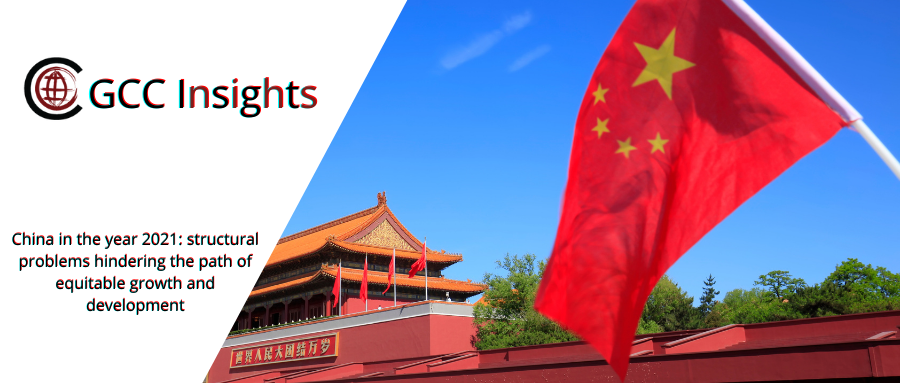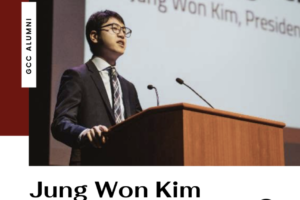Abstract
The geopolitical environment is increasingly becoming unstable where more and more countries are moving away from globalization which has always been a double-edged sword. China and the US had already been engaging in the tussle over plenty of issues, especially trade and intellectual property rights, but then came the pandemic, adding to the already existing worries of many.
Starting from the origins of the pandemic to China’s increasingly assertive foreign policy, the country was all over the news [still is]. However, when the whole world was at its wit’s end due to the Corona Pandemic, Beijing calmly dealt with the key areas that needed the most attention; by effectively imposing lockdowns and following safety measures, it emerged as the sole country to recover and record positive growth.

Source: Xinhua News
Where the communist model of development has failed, China with its continuous reform and remarkable leadership is constantly reminding the world that it isn’t the end just yet. Developing China with its unique “socialism with Chinese characteristics”, it’s teaching the capitalist countries all over the world, “the true capitalism”. Thus, there’s a constant need for policies and reforms for a more powerful and important geopolitical player like China.
01 Introduction
The agenda set out by Xi, the realization of “the Chinese dream” and the two centenaries’ goals (2021,2049 [see fig.1]) depend on constant change and improvement and amending the old policies which have or will only hinder the modern Chinese society, especially the long practiced “hukou household registration system”.

[Fig. 1]Source: Government reports, KPMG analysis
Also, external shocks like the blockage in the Suez canal only add to the worries in an intricately linked global economy and how uncertain mishaps can cause billions of dollars worth of loss.
The recently concluded two sessions or “lianghui” outlined the future path for China politically and economically and set out the pace for China’s 14th FYP towards a technically “more advanced and self-reliant China” and a path for quality development, a move to get back at its western counterparts who had long been blaming China for issues such as Intellectual property rights and unfair-nontransparent trade practices.

Source: Xinhua News
Nonetheless, China’s road to global supremacy is a long way ahead as internally, the country faces some major structural as well as social problems today that’ll only be detrimental in the long run if not handled today [which the country is trying to rectify, albeit gradually]. In the early stages, economic development mostly depends on models following intensive export inducements and relies heavily on investment-saving functions. China adopted the same strategy, however, when the country is fast approaching its maturation with decreasing growth rates, it becomes necessary to change existing structures for turning the wind.
As Yu Yongding and many others have identified, “the high shares of investment and current account surpluses in GDP” are the major structural imbalances in the Chinese economy (Yu, 2007). Overinvestment signals future excess capacity and huge external imbalances could substantially weaken the sustainability of China’s very strong growth trajectory, especially with its significantly repressed financial system [State ownership of the banking sector remains dominant, with the government controlling at least 85% of banking assets (Naughton B., 2017)], and with the Debt-to-GDP ratio very high.
Focusing briefly on old institutional setups and associated loopholes, coupled with emerging new threats, this article will outline major problems the Chinese economy is facing today and what’s the new game plan?
02 SOE’S, Private Enterprises and the role of the Chinese Government
The role of State-Owned Enterprises (SOE’s) for the development of the Chinese economy has varied over periods of time, however, one aspect which is everchanging is the “security umbrella” which is provided to the inefficient ones too, especially, because of the big role they play in providing security functions and employment opportunities (not forgetting the political hidden agendas attached too).
Varied research on SOE’s and their working in the Chinese economy depicts the overly attached importance to them by the leadership, huge resource allocations provided and better access to finance (essentially, they enjoy low borrowing costs), in comparison to their private counterparts. Due to this, the domestic private sector faces severe credit constraints and economic efficiency suffers as resources are misallocated (Sarah Chan, 2020).
For the first time on the Fortune Global 500 list, China surpassed 124 companies over US 121. However, such figures aren’t enough when the Chinese private sector is vastly disadvantaged and working beyond Smith’s “free-market” principles. The Chinese growth has been exemplary for the initial stages of its take-off, however, that isn’t enough if it wants to compete globally. Figures compiled by CSIS clearly indicate how far China is and why reform is necessary.

[FIG. 2] Return on Assets (2020)

[FIG.3] Profit Margin (2020)
SOE’s are famous for their poor-performing market practices and their inability to be flexible to the market demands, and more importantly, their lobbying practices which drive out more competitive firms out of the picture. Such practices could be highly detrimental when the Chinese economy is progressing towards a transition from an “Export-Investment led” economy to an “innovation-domestic consumption lead” one, as flexibility is very important when met with uncertain global conditions like for example the current Covid pandemic and it is believed that State lead organizations often fail to cope up with such external shocks. In addition, in comparison to their competitive private counterparts, they perform poorly and are overly leveraged (evident in FIG.4).
In the background of all this, the private sector has actually been the one driving the Chinese economy on the path of growth since the Global Financial Crisis of 2008. A working paper from the World Economic Forum stated that “China’s private sector – which has been revving up since the global financial crisis – is now serving as the main driver of China’s economic growth. The combination of numbers 60/70/80/90 are frequently used to describe the private sector’s contribution to the Chinese economy: they contribute 60% of China’s GDP, and are responsible for 70% of innovation, 80% of urban employment, and provide 90% of new jobs. Private wealth is also responsible for 70% of investment and 90% of exports”.

[FIG. 4] Source: The Economist
However, new worries are surfacing when the Chinese government wants to create a “modern private enterprise system with Chinese characteristics.” The assertive stance of the current leadership under Xi to control any voice of complaint regarding the current institutional setup is being targeted, the so-called “destabilizing elements”. This increasing role, especially in the private sector won’t do the modern Chinese economy any good and especially towards the goal of “making China strong again”, mainly because the private sector provides that cutting edge competition, flexibility, expertise, and more importantly, “innovation” that globally competing China needs against its western competitors.
03 Hukou or “the Household Registration System”
As Peter Alexander and Anita Chan mention in ‘‘Does China have an apartheid pass system?’’, the Hukou system in China has created a system of ‘‘cities with invisible walls’’, employed to restrict social mobility and associated gains with it. First introduced by Mao when China was providing a splendid “communist” example to the world as a means to restrict the outward migration of peasants from rural areas and crowding the urban areas. Partly it was also due to the reason that China was vastly an agrarian economy and such migrations would’ve been detrimental to the surplus funding which was being provided by the agricultural sector and invested in industrial endeavors. After Mao, Deng carried it with the fear of rural dwellers crowding and increasing urban population to unprecedented levels and the bad examples such migrations had been provided by the newly developing countries.

Source: CGTN
Now, why is such practice problematic for the Chinese economy today? Mainly due to the reason that such restrictions carry with them the inequalities that inevitably affect labor productivity and social behavior of the individual, especially when productive and abundant labor has always been an important factor towards “the Chinese miracle”. In “Social identity and inequality: The impact of China’s hukou system”, Farzana Afridi, Sherry Xin Li b and Yufei Ren point out the “The causal effect of such administratively created social identity in distorting individuals’ performance on incentivized tasks and potentially exacerbating existing inequities in the distribution of gains from economic growth”.
The rural migrants in urban areas are highly discriminated against and more importantly, the incentives linked with an Urban hukou aren’t provided which are a must for living in developed urban areas. However, the government has been revving up the speed at providing migrants with urban hukou albeit with certain restrictions or conditions, but the pace is too slow and too meager as numbers are many.
04 Aging Population

An aging population is one where a proportion of the population aged 65 and over exceeds 8 to 10 percent and China is long past these figures back in 2018 when 11.9% of its population was 65 years or older. China, the most populous country in the world, benefitted hugely from its abundant labor to set out a pace for its economic growth, however, certain government policies like the “one-child policy” to reduce demographic pressures and related problems were introduced, and have since added to this problem. However, that’s not the only case. Issues like the rise in real-estate prices, coupled with increased expenses associated with rearing and bearing children are pulling back couples from getting married and in turn, halting their family planning.

Source: CGTN
Despite a change in 2016 allowing families to have two children, births dropped for a fourth-straight year in 2020, and fell by 15% to 10 million, according to the analysis of a public security report (CNBC). Natixis’ chief economist for Asia-Pacific, Alicia Garcia-Herrero, said that “The bigger problem for China is that an aging population feeds into an existing issue: slower growth in labor productivity”
It was projected that the number of elderly people will exceed 300 million during the 14th Five-Year Plan (2021-25) period, which will fundamentally influence social development. The data from the Ministry of Human Resources and Social Security shows that the nation’s labor force began to decline in 2012, with a decrease of 3 million per year on average since. It is projected to be reduced by an additional 35 million from 2021 to 2025. If this goes on, China will become the first developing country to be facing the problem of an “aging population” which will only reduce its chances for a more competitive geopolitical environment.

Source: CGTN
05 Conclusion
China has been facing structural-institutional problems ever since, however, the need to rectify them now has become more urgent when the Chinese economy has already entered a transitioning phase towards innovative-consumption driven qualitative growth targets, pronounced in the blueprint set out for the 14th FYP. The Chinese leadership is well aware of how unstable today’s geopolitical environment is, and is, however, working to become more self-reliant.
In a speech to the Party’s Central Economic and Financial Working Group in April 2020, President Xi called for building “independent, controllable, secure, and reliable supply chains to ensure industrial and national security with access to at least one alternative source for important products.” The state has also been trying to gradually reform the existing structures such as the hukou system, however as mentioned earlier, the pace is too slow.

Source: CCTV News
Also, setting up new models of developments such as “the dual circulation” which refers to “leveraging the dual forces of domestic and global demand by developing domestic capacity while pursuing openings in global markets”, will only be successful when the private sector of the economy gets a breathing space which it so desperately needs now.
A study conducted by CSIS, “The Credit and Credibility” mentioned that the key anchor of stability within China’s financial system was the credibility of China’s government interventions themselves and the signal they sent to market participants that any instability in financial markets would be countered by a meaningful and sufficient government response. This attitude of the government should be reversed to promote a healthier and more competitive economic environment ensuring the survival of the fittest.
-END-
Author:Mona Rani
Editor:Tracy Zhou
Reviewer:Jane Zhang









